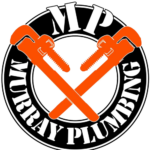Water safety is important for every home. Clean water keeps people healthy and prevents damage to plumbing systems. A long-term water safety plan helps protect your water supply. This guide explains how to make a clear and simple water safety plan.
1. Check Your Water Source
Start by understanding where your water comes from. Most homes use water from a city supply or a private well. City water is tested regularly, but you should still stay informed. Contact your local water authority and request the latest water quality report.
If you use a private well, test your water once a year. Use a certified laboratory to test for bacteria, nitrates, and contaminants. Keep records of each test.
2. Install Water Filters
Install water filters to improve water quality. Choose filters based on your water supply test results. Common filters include carbon filters, reverse osmosis systems, and whole-house filtration systems. Replace filters on schedule. Follow manufacturer instructions.
3. Maintain Plumbing Systems
Inspect your plumbing system once every six months. Look for leaks, corrosion, or blockages. Fix small problems immediately to prevent bigger issues. Hire a plumber for professional inspections and repairs. Clean faucet aerators and showerheads to remove mineral buildup.
4. Plan for Emergencies
Store emergency water supplies. Keep at least one gallon of water per person per day for three days. Store water in food-grade containers. Replace stored water every six months. Keep water purification tablets and portable water filters in your emergency kit.
5. Monitor Water Usage
Track your water use to detect leaks and conserve water. Install smart water meters if available. Check your water bill for unexpected spikes. Fix leaks immediately. Reduce water waste by using water-efficient appliances and fixtures.
6. Prevent Contamination
Keep hazardous chemicals away from water sources. Store pesticides, fuels, and paints in safe locations. Avoid using chemicals near outdoor water sources. Prevent backflow in your plumbing system by installing backflow prevention devices.
7. Maintain Outdoor Water Systems
Check outdoor faucets, irrigation systems, and garden hoses. Fix leaks and replace damaged parts. Clean rain barrels and check that downspouts direct water away from foundations.
8. Test Water After Plumbing Repairs
Test your water after major plumbing work. Plumbing changes can introduce contaminants. Use a certified lab for water testing. Check for lead, bacteria, and other pollutants.
9. Educate Your Family
Teach everyone in your home about water safety. Show how to detect leaks and report issues. Explain why water conservation matters. Post emergency contacts and water shut-off instructions where everyone can see them.
10. Create a Maintenance Schedule
Write down tasks and set reminders. Schedule water tests, filter changes, and plumbing inspections. Stick to the schedule to keep water safe.
11. Replace Old Pipes
Old pipes can leak or release harmful substances. Replace lead, galvanized, or corroded pipes. Use copper or PEX pipes for better water quality.
12. Stay Updated on Water Issues
Follow local news and water authority updates. Learn about water advisories and changes in water quality. Sign up for alerts from your water provider.
13. Install Water Softeners if Needed
Hard water causes mineral buildup in pipes and appliances. Test for water hardness. If needed, install a water softener. Maintain the softener regularly.
14. Keep Water Storage Clean
Clean water storage containers before refilling. Use mild soap and clean water. Rinse thoroughly. Store containers in cool, dry places away from sunlight.
15. Review Your Plan Yearly
Review your water safety plan every year. Update it based on test results, changes in water supply, and plumbing updates. Keep copies of all records.
16. Use Water Efficiently
Use water-saving techniques indoors and outdoors. Turn off the tap when brushing teeth. Water lawns in the early morning. Collect rainwater for gardening.
17. Know How to Shut Off Water
Locate the main water shut-off valve in your home. Teach all family members how to turn it off. Mark the valve clearly. This step can prevent flooding in emergencies.
18. Prepare for Seasonal Changes
Winterize outdoor faucets and pipes before freezing temperatures arrive. Insulate exposed pipes. Drain garden hoses and store them indoors.
19. Use Non-Toxic Products
Choose environmentally friendly cleaning and gardening products. These products reduce water contamination and protect your plumbing system.
20. Consult Professionals
Work with certified plumbers and water specialists. They can help test your water, inspect plumbing, and make recommendations.
Conclusion
A long-term water safety plan protects your home and family. Follow these simple steps to keep water clean, safe, and reliable. Test regularly, fix problems early, and stay informed. Small actions today can prevent big problems tomorrow.
